Nooen (a phonetic spelling) - The Making of Thai Silk Pillows
I'm always interested in the old ways, the way different people and cultures made things before the industrial revolution. In the villages of Thailand there are still older women and men who know the old ways of doing things. They need no electricity to make the things they need to survive and to add comforts to their lives. Much of these arts are being lost now. Most of the kids here do not want to learn the old ways, unless of course it is easy to do and can make them good money. So silk weaving is still done everywhere, as silk can bring in money, but many of things done for home use are fading fast. My wife's mother knows how to and makes all sorts of things in the old way. It seems like every month of the year she has some project to do. One month is silk weaving, another is cotton thread making from cotton she grows in her garden. Another month it is cotton cloth weaving, the next month will be charcoal making. She salts her own fish, and makes jars/pots of certain condiments and foods. She dries her own chilies, ferments her own rice wine, and makes her own pillows for home use and as for presents to the monks and family and friends. Here I want to show one of the processes that goes into making the small pillows you see in every Thai home, and in taxi cabs, mini-vans for hire, hotel lobbies, etc. They are usually seen by tourists for sale in the many tourist areas, and they come in a few different shapes; round, rectangular, square, and triangular like long pyramids. I'd often wondered what these small firm pillows were stuff with. Recently I found out. Here is the process for collecting and harvesting Nooen for use in pillow stuffing.
Nooen are pods from a tree. The pods are filled with Nooen and seeds. The pods dry out while hanging on the trees, and if left alone they split open and the light, small cottonball-like innards are dispersed through the breezes on the air and take their seeds along with them to grow more trees. The pods are harvested before they split and collected for use in making the stuffing for these colorful ubiquitous pillows which are made of a rough silk or sometimes cotton for coverings. Here below you can see the process that my mother-in-law takes to harvest the Nooen. These pictures were taken by my daughter at my urging one weekend recently for your education in this ancient Thai process.
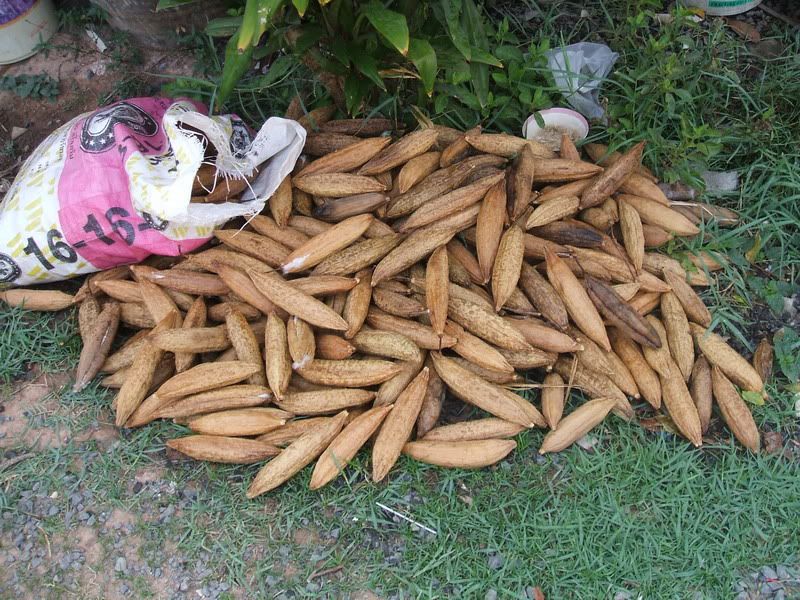
Here is a pile of the Nooen pods. They are dry and hard skinned.
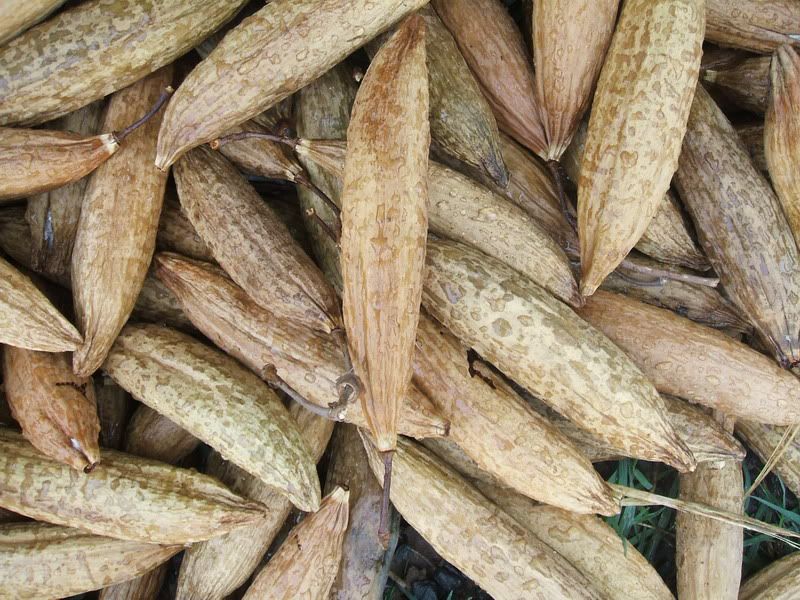
A closer shot of the pods. They are about the size and shape of a banana.
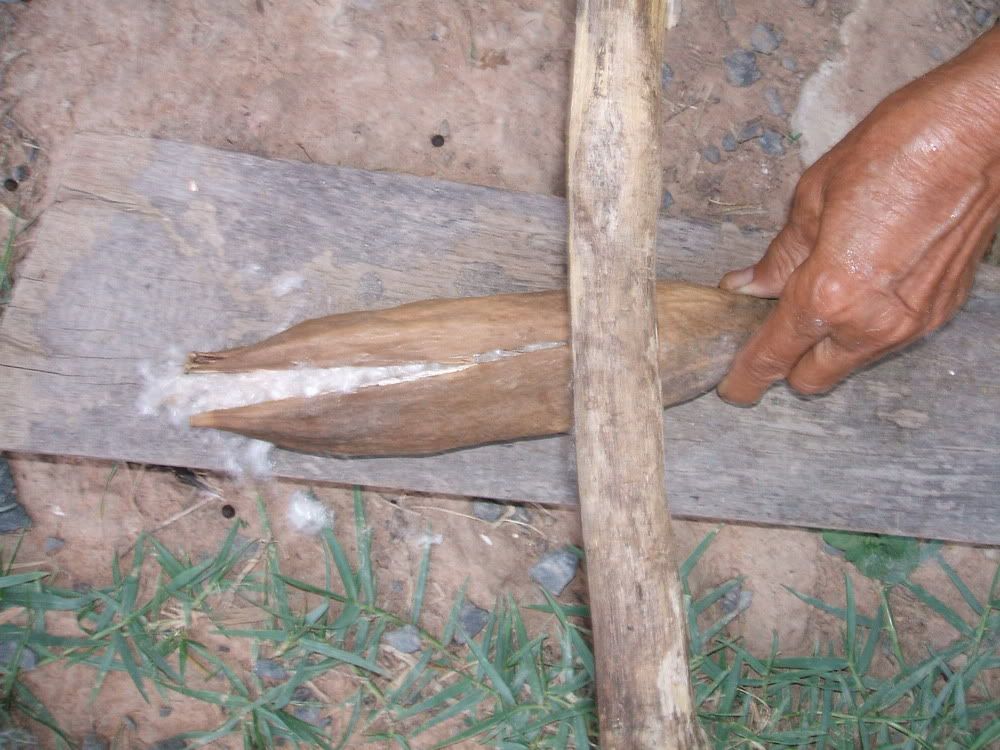
Splitting the Nooen pod. Not much to it, but a bit of force is required to split them.
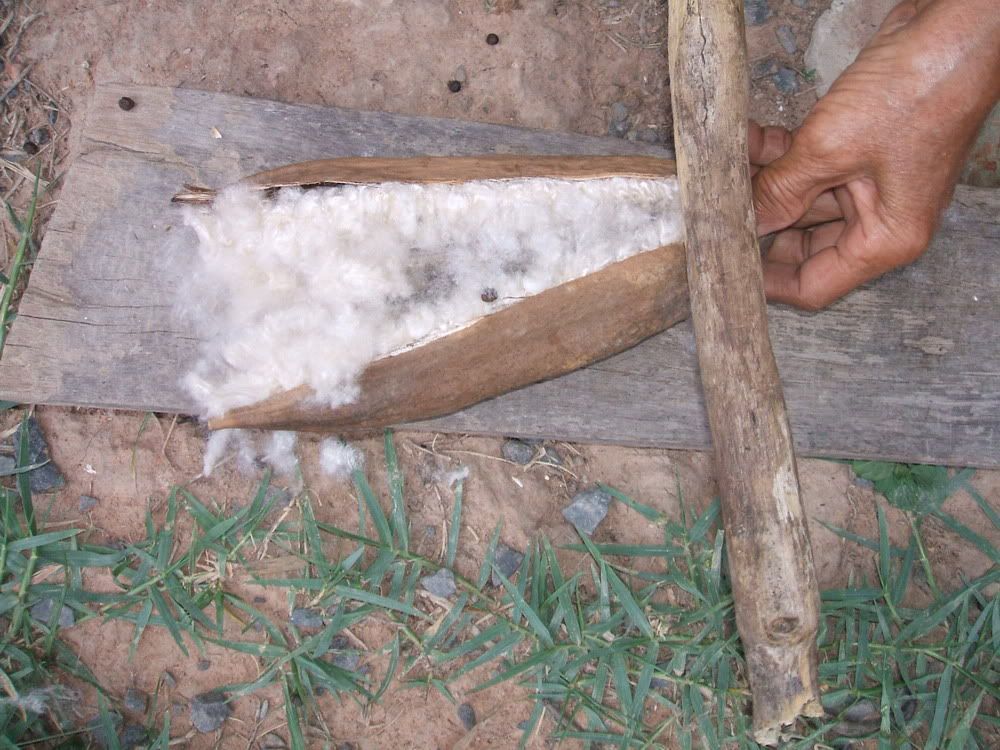
Here you can see the fluffy material inside the pod. The seeds you see here are pea sized and hard.
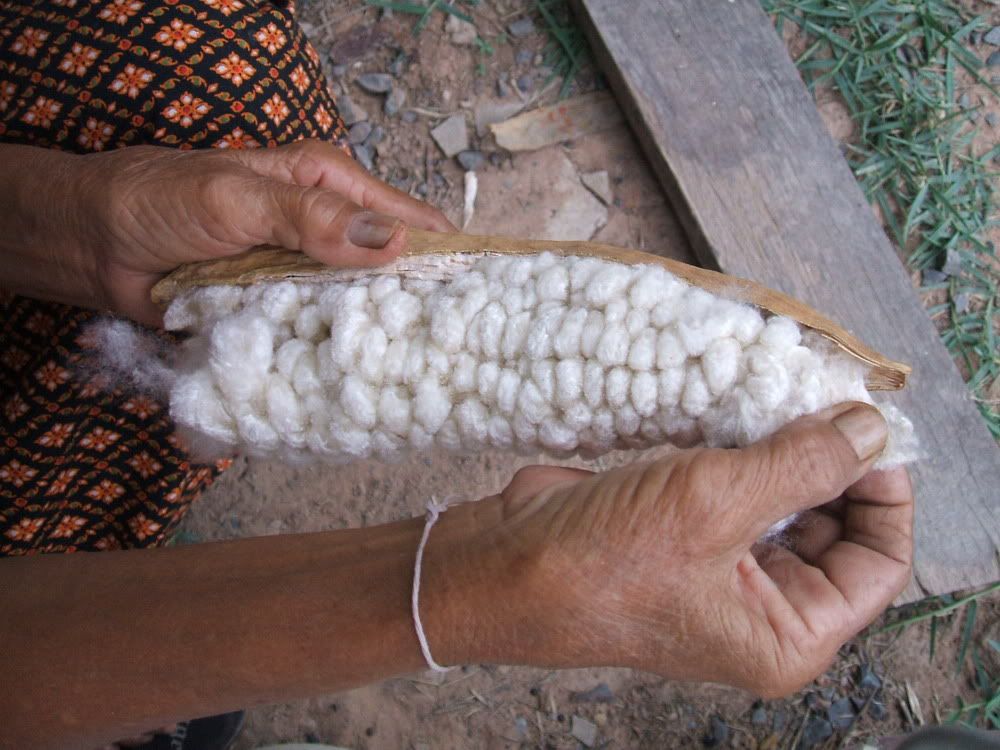
A perfect shot of the interior of a Nooen pod. Notice the small balls of cotton-like material. Mama strips the pod of its contents.
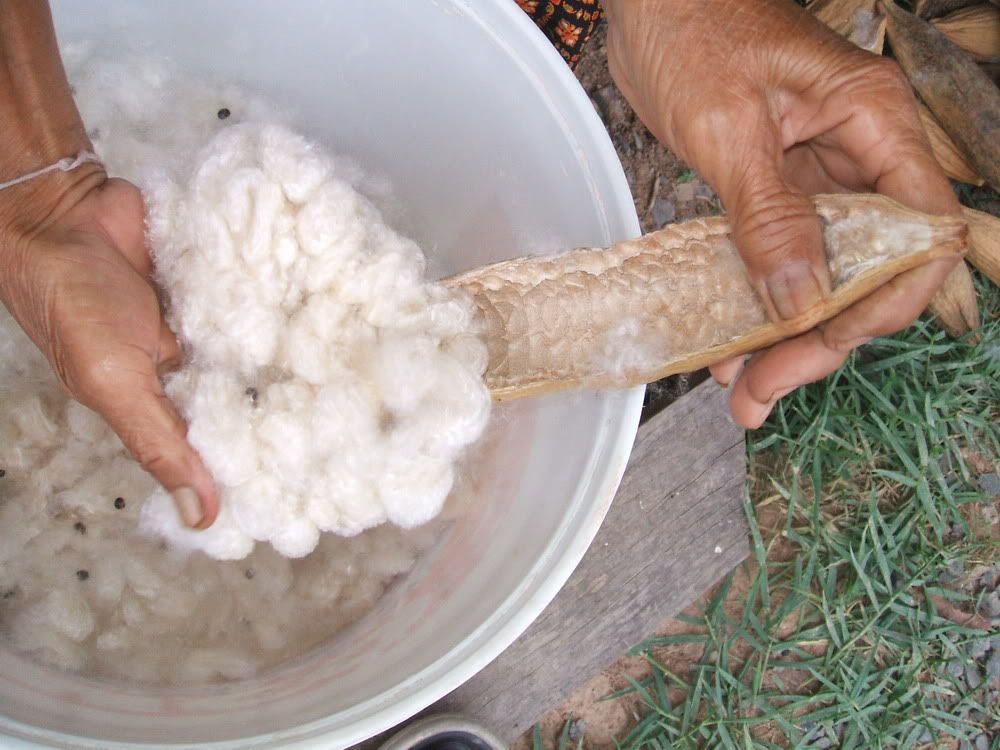
You can see by the inside of the pod here that the material is formed into small balls with many seeds. Also inside the pod is a length of matter that is central to holding the balls in place which the cotton balls need to be stripped off of.
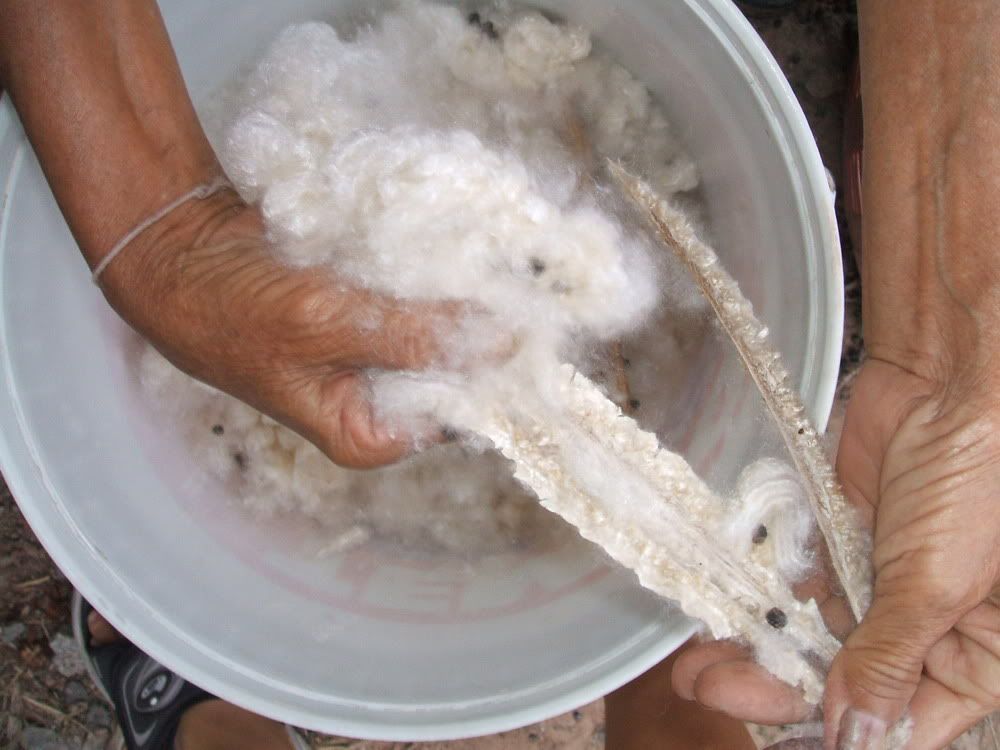
Here's a better view of the 'cob'. The balls of cotton are attached loosely to this much like corn is to its cob.

Mother-in-law with a five gallon bucket full of the Nooen. This stuff is very plentiful inside the pods and you get a lot of material from each pod.
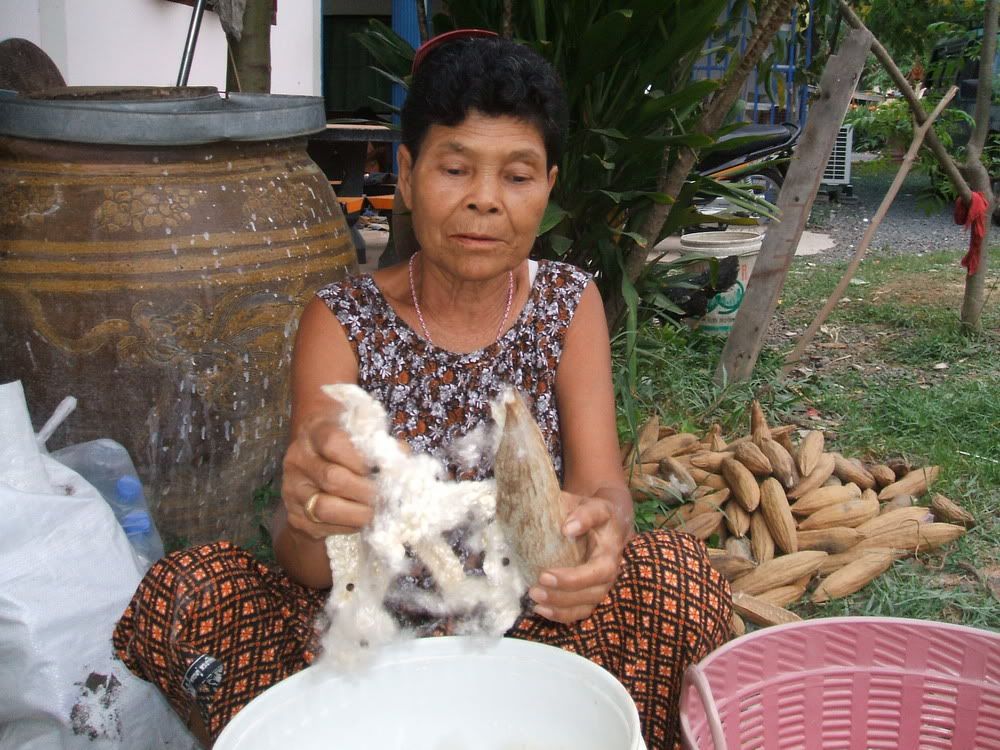
Another good shot of Mama at work.
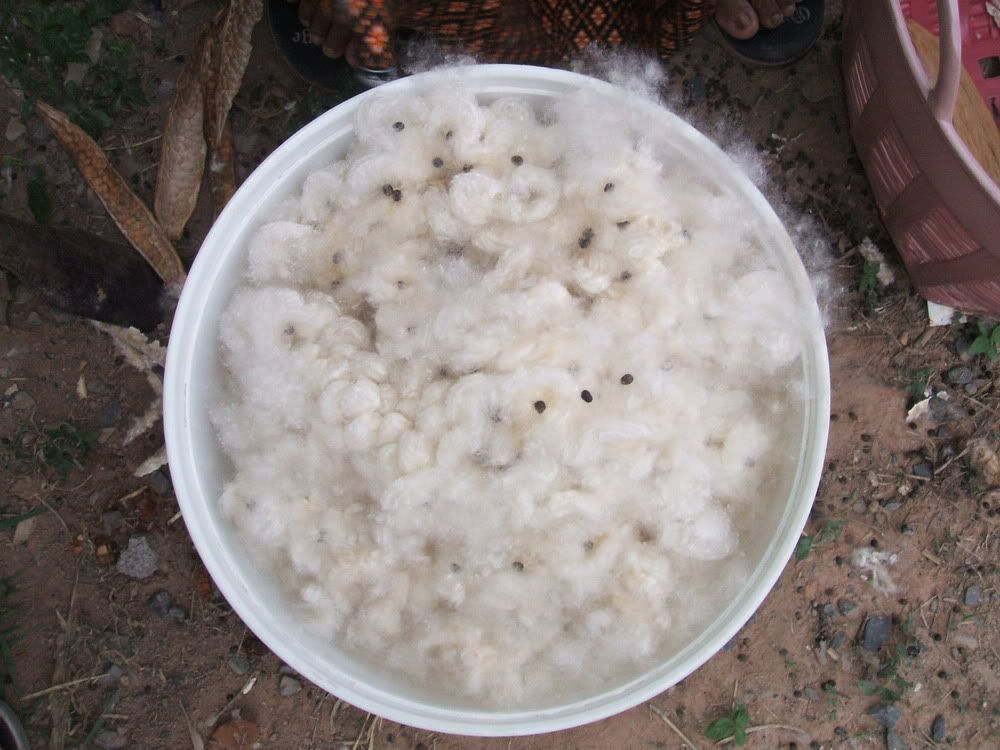
A closer look at the full bucket.
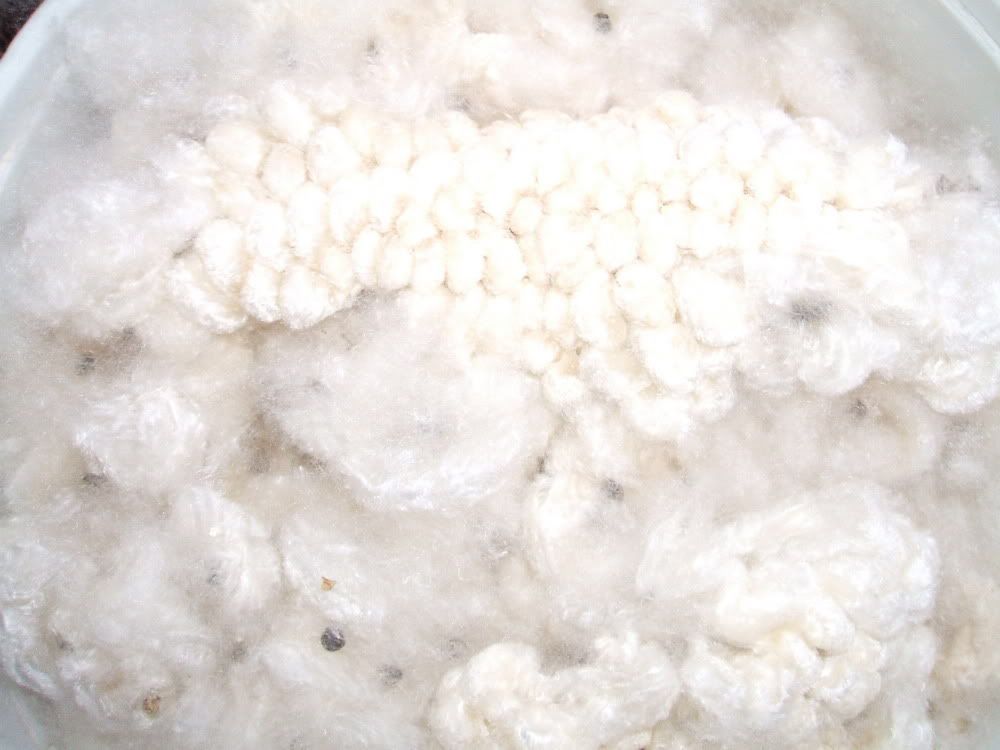
And here's a good close up of the material and seeds. The Nooen is very light and fluffy when pulled apart. But it does get packed in very tightly into the pillows and forms a very firm cushion.
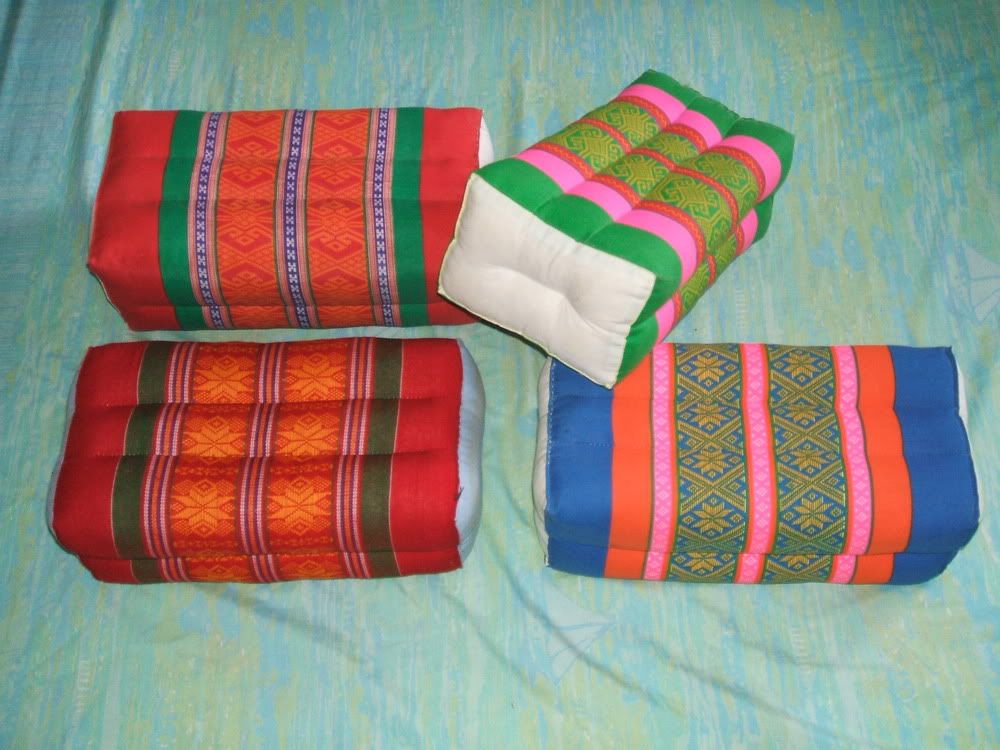
Here are some of my own pillows. Thais usually have a lot of these in their homes for use by overnight guests. These and the floor mats which can be rolled up or folded are stored usually in an armoir type standing closet for visitors. These pillows are used by the Thais when they watch TV as well. Thais do not use chairs much like westerners do. They like to lounge on the floor on their woven floor coverings and use these pillows for extra comfort.
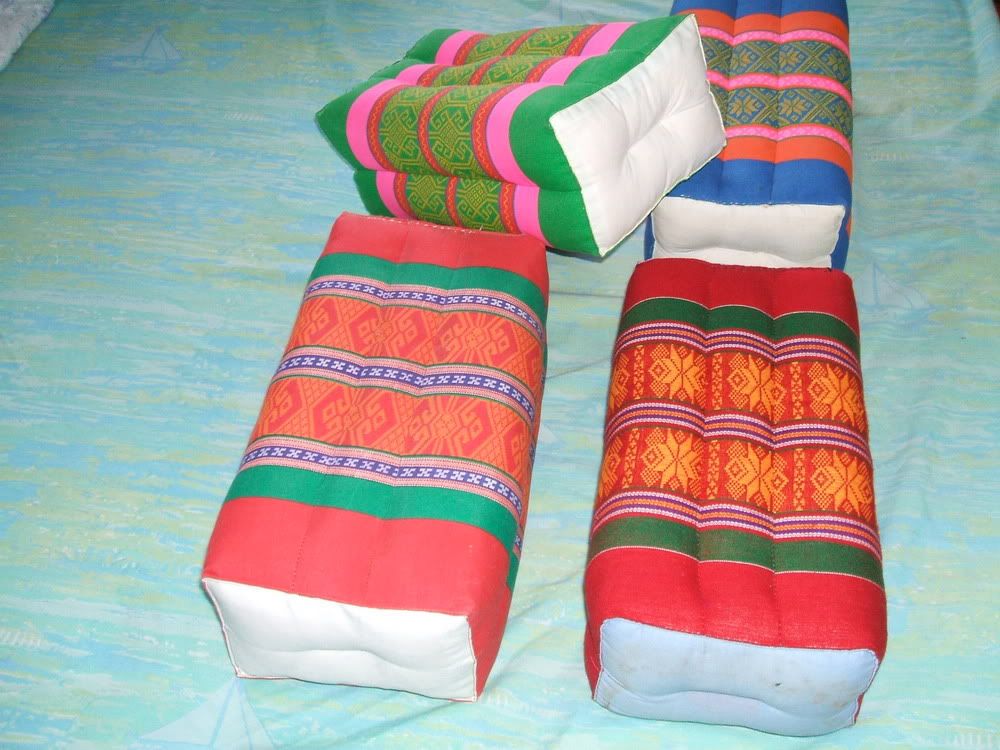
Here's another angle to show the way these are stuffed and sewn.
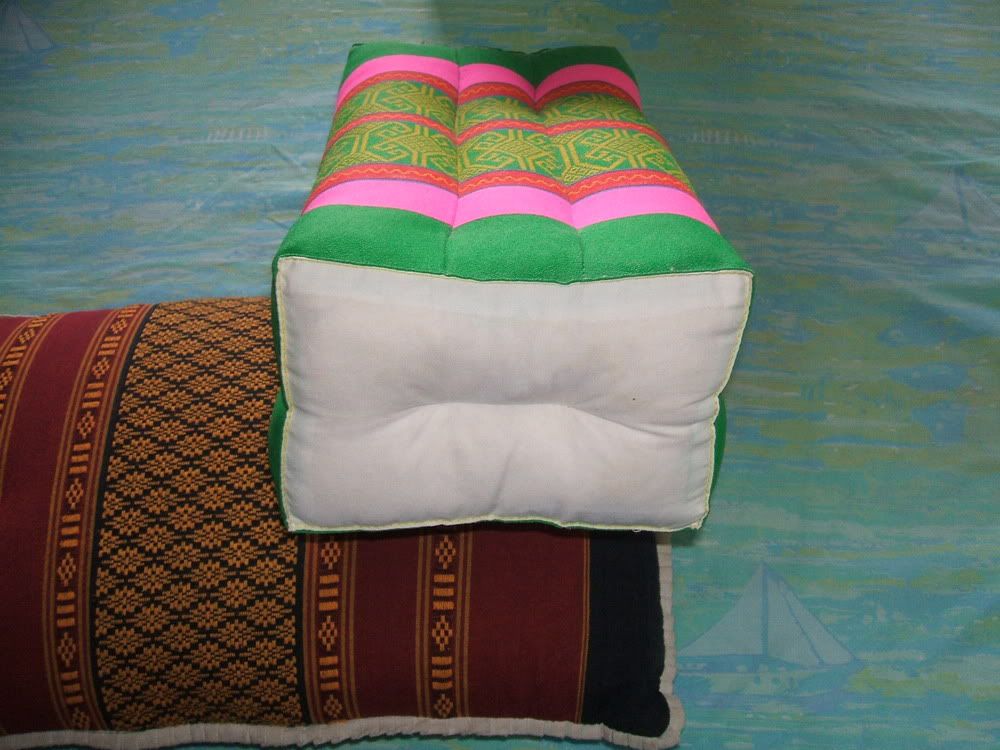
A closer shot of the end piece so you can see the stitching.
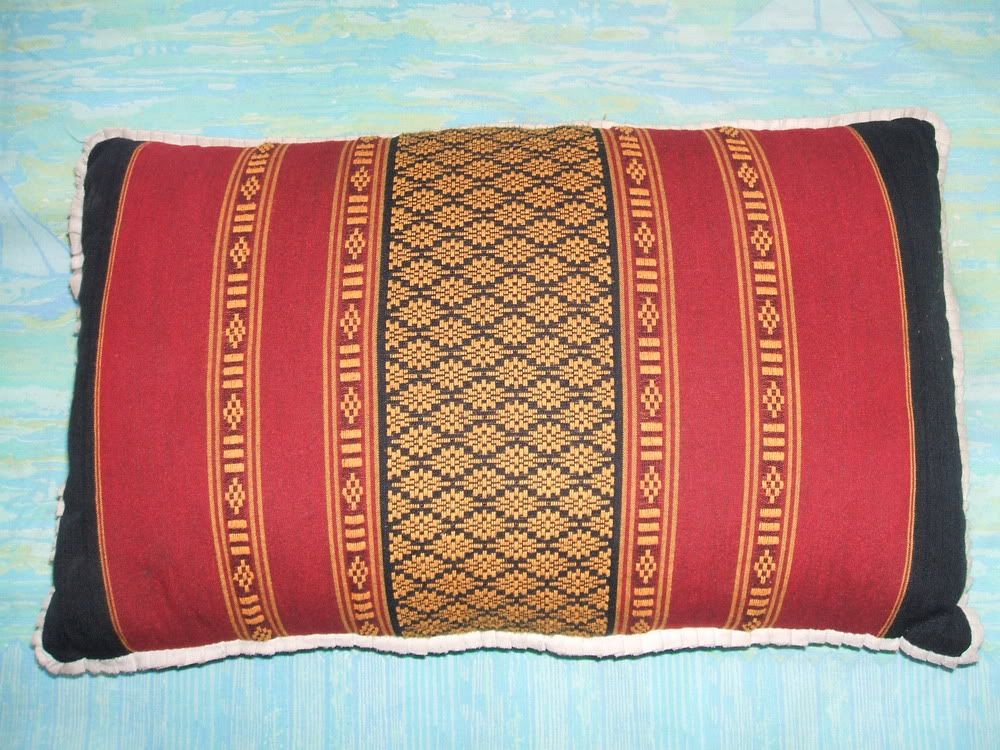
Here is a normal shaped pillow of mine made with silk cloth, cotton edging, and Nooen as the fill. It is about one quarte the size of a western style pillow. These pillows come in many styles of design. Most styles are unique to certain areas of the country. I wish I had one of the triangular style to show you here, but I find the shape uncomfortable myself.
I hope you've enjoyed this article on Nooen and Thai pillows. Thanks to my daughter, Starbeam, for the great pics as well. 
Mike/Cent
